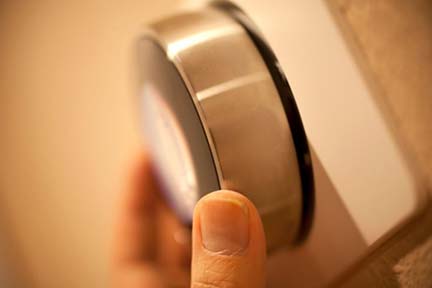
Weatherization program helps low-income Michiganders reduce heating bills Gov. Whitmer proclaims October as Weatherization Month FOR IMMEDIATE RELEASE: Oct. 12, 2021 CONTACT: Bob Wheaton, 517-241-2112, wheatonb@ LANSING, Mich. – The Michigan Department of Health and Human Services (MDHHS) and Gov. Gretchen Whitmer are raising awareness during Weatherization Month of a program that reduces household energy costs by an average of $283 per year – benefitting approximately 1,300 low-income families in Michigan. The governor has proclaimed October as Weatherization Month in Michigan. “Together, we can help low-income families reduce their energy costs and meet their basic needs,” Gov. Whitmer said. “Weatherization programs help families save money, protect the environment, and offer opportunities to local businesses that do weatherization work. My administration will ensure Michigan families can keep their homes warm as we head into the colder months.” The U.S. Department of Energy Weatherization Assistance Program is administered at the state level by the MDHHS Bureau of Community Action and Economic Opportunity. MDHHS utilizes Community Action Agencies and non-profit organizations to provide weatherization services at the local level.
Trained weatherization professionals known as energy auditors use computerized energy audit software and advanced diagnostic equipment such as blower doors and infrared cameras to create a comprehensive energy analysis of the home. This analysis is used to determine the most cost-effective measures to install in each home. The energy auditor creates a customized work order. Then trained contractors and crew members install the identified energy-efficient and health and safety measures. “Weatherization reduces heating costs, which can be a lifeline for low-income families who might otherwise struggle to pay their utility bills,” said Lewis Roubal, MDHHS chief deputy director for opportunity. “Families benefiting from reduced heating bills can spend their money on food, clothing and other critical household needs.” Energy efficiency measures installed in client homes include items such as insulation, blower-door-guided air sealing of key leakage junctures, and installations such as lighting and water saving measures.
Health and safety issues such as elevated levels of carbon monoxide, moisture problems, mold, ventilation needs, and heating systems safety and efficiency are also addressed. There is growing evidence that the program provides benefits beyond energy savings. Improved indoor air quality and appropriate ventilation strategies lead to healthier living conditions in weatherized homes. These healthier living conditions often lead to improved health outcomes such as reduced asthma triggers and fewer doctor visits.
Eligibility is based on household income and if the home’s current condition is weatherization ready.
Anyone interested in applying for the Weatherization Assistance Program can contact their local provider.
More information about home energy savings can be found by visiting the websites below that cover:
Training for those working in the Weatherization Assistance Program is provided by the Michigan Training and Education Center. For more information about the training, visit www.MichiganTEC.org. |

